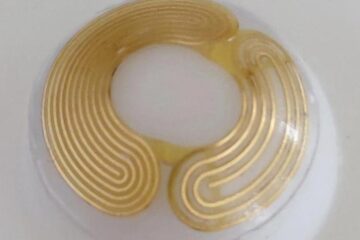NASA’s ’Spirit’ Rises On Its Way To Mars

A NASA robotic geologist named Spirit began its seven-month journey to Mars at 1:58:47 p.m. Eastern Daylight Time (10:58:47 a.m. Pacific Daylight Time) today when its Delta II launch vehicle thundered aloft from Cape Canaveral Air Force Station, Fla.
The spacecraft, first of a twin pair in NASA’s Mars Exploration Rover project, separated successfully from the Delta’s third stage about 36 minutes after launch, while over the Indian Ocean. Flight controllers at NASA’s Jet Propulsion Laboratory, Pasadena, Calif., received a signal from the spacecraft at 2:48 p.m. Eastern Daylight Time (11:48 a.m. Pacific Daylight Time) via the Canberra, Australia, antenna complex of NASA’s Deep Space Network. All systems are operating as expected.
Spirit will roam a landing area on Mars that bears evidence of a wet history. The rover will examine rocks and soil for clues to whether the site may have been a hospitable place for life. Spirit’s twin, Opportunity, which is being prepared for launch as early as 12:38 a.m. Eastern Daylight Time June 25 (9:38 p.m. Pacific Daylight Time on June 24) , will be targeted to a separate site with different signs of a watery past.
“We have plenty of challenges ahead, but this launch went so well, we’re delighted,” said JPL’s Pete Theisinger, project manager for the Mars Exploration Rover missions.
The spacecraft’s cruise-phase schedule before arriving at Mars next Jan. 4, Universal Time (Jan. 3 in Eastern and Pacific time zones), includes a series of tests and calibrations, plus six opportunities for maneuvers to adjust its trajectory. JPL, a division of the California Institute of Technology, Pasadena, manages the Mars Exploration Rover project for the NASA Office of Space Science, Washington, D.C.
Information about the rovers and the scientific instruments they carry is available online from JPL at http://mars.jpl.nasa.gov/mer and from Cornell University, Ithaca, N.Y., at http://athena.cornell.edu .
Media Contact
All latest news from the category: Physics and Astronomy
This area deals with the fundamental laws and building blocks of nature and how they interact, the properties and the behavior of matter, and research into space and time and their structures.
innovations-report provides in-depth reports and articles on subjects such as astrophysics, laser technologies, nuclear, quantum, particle and solid-state physics, nanotechnologies, planetary research and findings (Mars, Venus) and developments related to the Hubble Telescope.
Newest articles

‘Smart’ contact lenses could someday enable wireless glaucoma detection
Most people with early-stage glaucoma don’t know they have it, even though early treatment is key to reducing vision loss. While detecting a subtle increase in eye pressure helps doctors…

New tech may lead to smaller, more powerful wireless devices
Good vibrations… What if your earbuds could do everything your smartphone can do already, except better? What sounds a bit like science fiction may actually not be so far off….

Caution, hot surface!
An international research team from the University of Jena and the Helmholtz Institute Jena are demystifying the mechanisms by which high-intensity laser pulses produce plasma on the surface of solids….





















